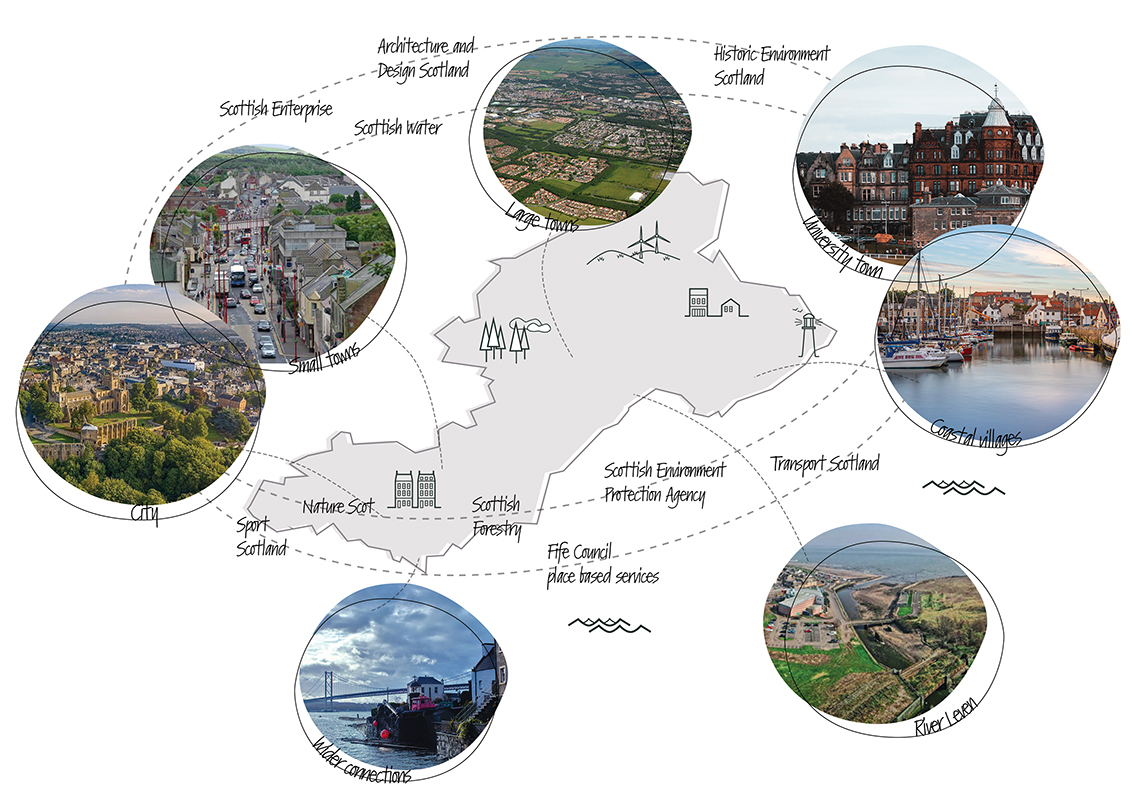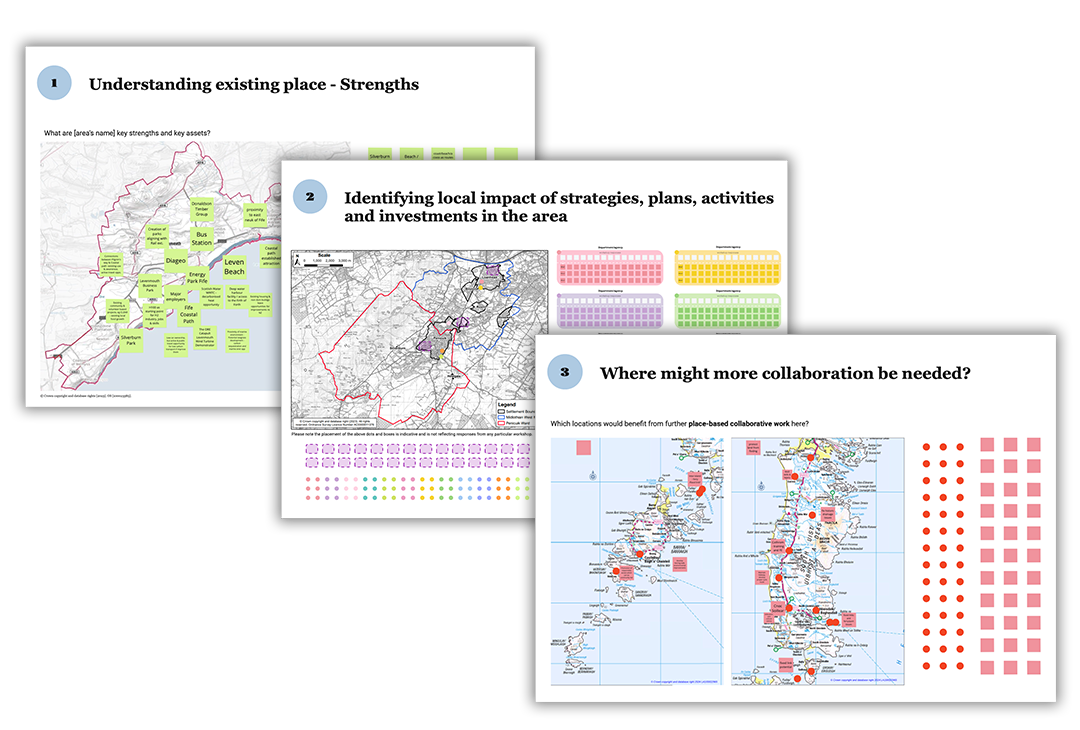Harnessing the power of design in development planning

(14 November) Architecture and Design Scotland Senior Design Officer, Kate Givan, shares insight into the value design can bring in working collaboratively to gather evidence for Local Development plans.
For me, the greatest value of design is as a way of thinking and as a powerful problem-solving tool.
At Architecture and Design Scotland (A&DS), through our recent work with local authorities and key agency partners, we have developed and facilitated a pilot approach to local development planning using design thinking, methods and approaches.
By applying design as a problem-solving tool at a strategic scale, we are helping partners build a collective understanding of the issues and opportunities that a local development plan needs to address for its places and communities through its evidence report.
This partnership work demonstrates the value that design thinking can play in helping shape the planning and delivery of our future places to deliver on ambitious national policies.
Why use design thinking in development planning?
While the link between design and buildings is clear, design can also play a crucial role in planning for wider places, informing decisions about where and how places are developed. In the wrong location, even very well-designed buildings can have negative outcomes, such as increasing travel distances or being disconnected from neighbourhood infrastructure. So, decisions about where we locate development and why are in themselves design decisions.
Local development plans set out where development can and cannot happen in a local authority area. Those tasked with preparing development plans are not typically trained as designers. This is where a design approach can play an important role in helping planners think together with the others involved about development needs and opportunities. The initial phase of preparing a plan is to gather relevant evidence into an evidence report. Thinking about plan-making as a design process, this phase is where we ‘discover’ and ‘define’ the issues and opportunities that the plan needs to address or the problems it needs to help solve.
How are we applying design thinking in development planning?
In 2023, six planning authorities were chosen for Key Agencies Group Local Development Plan Offer pilot support with their evidence reports. We are providing design-led support, helping planning teams at key stages to establish a place-based, collaborative approach with their project and corporate teams and to collectively map and analyse evidence with key stakeholders using design tools and approaches.
What have we learned from this work about the value of design?
Through this work, we have observed several of the benefits design can add:
- Design capacity and design leadership: Working closely with planning teams from the outset helps to build their understanding, skills and confidence to take the lead on a design-led approach to plan preparations with their corporate teams and other stakeholders.
- Building collective understanding: At the earliest stage of plan-making, design methods are helping build a shared understanding of local issues and opportunities across all those with a role in aligning future development with community, infrastructure and climate resilience needs.
- Supporting national policy: Design-led approaches are helping ensure development plans are being prepared to support development and infrastructure aligned with ambitious national policies in National Planning Framework 4 for sustainable, liveable, and productive places.
- Efficient resources: Early application of design thinking is allowing efficient use of collective resources, and helping identify and prioritise where further collective work on design and delivery will add most value.
- Addressing complex challenges: Design methods and approaches are helping embed the collaboration and stakeholder involvement needed to tackle complex issues such as climate change and health inequalities early in the planning process.
- Ensuring long-term value: Collaborative design helps anticipate the long-term needs of places and communities, and informs decision-making in the long-term public interest.
- Partner benefits: A shared learning event highlights further observations from partners of the benefits of the early pilot work including increased stakeholder engagement, improved information sharing, and a more comprehensive understanding of local needs and challenges.
Who else can benefit?
An important part of our approach has been to develop design methods and tools that are transferrable. We have worked across a diverse range of places and contexts across Scotland through the offer, using common methods and approaches, tailored to each place. To support others to apply this in their own places we have published Place Skills for Plan Making, a suite of resources, tools and guidance, available for all to use.

What next?
With our work showing that a design-led approach adds real value to early development plan preparations, we look forward to exploring the role design can play at the next stage of plan-making, where spatial strategies and place briefs will help shape delivery of development across Scotland.
Header image: visualisation of Fife Local Developlent Plan pilot partners and place types.
Image credit: (Small towns) Cowdenbeath high street, Paul McIlroy on Wikimedia; (City) Dunfermline Abbey and city, Fife Council; (Wider connections) North Queensferry and Forth road bridge, Viktoras Jakovlevas on Unsplash; (River Leven) The Leven Project; (Coastal villages) Anstruther harbour and town, Neil and Zulma Scott on Unsplash; (University town image) St Andrews, Yukon Haughton on Unsplash; (Large towns image) Glenrothes, Yoostar on Wikimedia
The value of design
In June 2024, we launched the value of design campaign to talk about what we mean by design and how we think it can improve people’s lives. This article is part of a series of short thoughtful pieces that explores how thoughtful design can transform communities, boost opportunities, and improve overall well-being.
